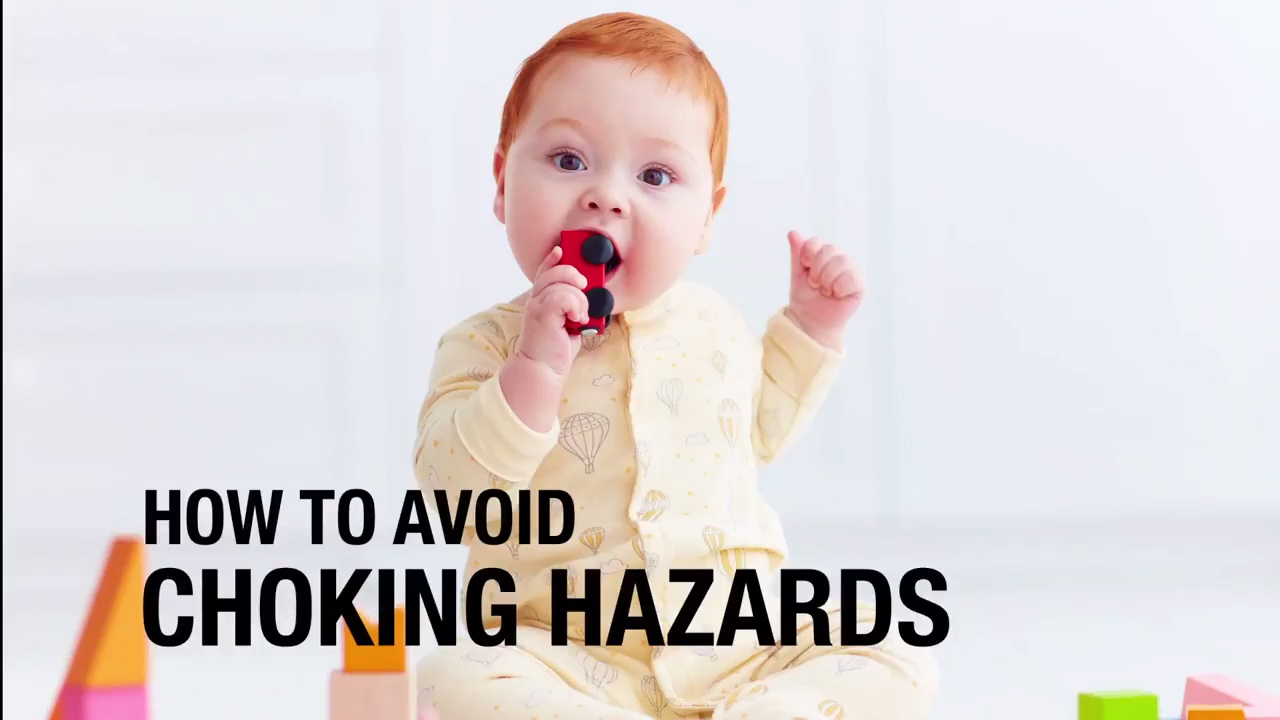How to avoid choking hazards
- Food choking is surprisingly common. One child dies every five days in this country from choking on food. About 10,000 kids each year visit the emergency room from choking accidents. If it were my choice, kids couldn't be on baby food 'til they're twelfth. This is not possible, but we do have to have some guidelines. Unfortunately, there are no guidelines set from the FDA or from the CDC regarding what is safe for children to eat. My recommendation is that toddlers, and by toddlers I mean kids under three, should not have candy of any kind, no lollipops, no nuts, no popcorn. Raw vegetables, you need to be very careful in kids under two or three also. The most common way to have a choking accident is a child who's running around while they're eating. The best way that you can prevent that is to have your child sit while they're eating. If they're running around while they're eating, if they're sitting in the back seat of the car while they're eating, you will not see them if they choke. You will not hear if they choke. By the time you realize that they've choked it could be too late and they may have already stopped breathing. The car is not a place for a child to eat. The playground is not a place for your child to eat unless they're sitting down with you. Look at your child while they're eating. The choking accidents that kids have can be silent. One of the most dangerous and unfortunately most common objects that a child can stick in their nose, ear, or throat is a disk battery. Disk batteries are everywhere. They are tiny, they are easy to swallow and it's easy to miss if your child does this. The unfortunate thing is that they cause rapid permanent damage to the tissues, including inside of the ear. There are two reasons for this. One is that the battery can generate a little bit of an electrical current that can cause damage to the tissue. The other is the warm environment of the ear, the nose, or the mouth can allow for some leakage of the battery fluid and it can also cause permanent damage. If you think your child has stuck a battery up their nose, a battery in their ear or swallowed a battery, they need to go to the emergency room right away. The damage is very quick and it can be permanent.
Pediatric Otolaryngologist Nina Shapiro walks us through her recommended best eating practices for infants or toddlers.
Related Videos
Transcript
Expert Bio
More from Expert
Nina Shapiro, MD
Pediatric Otolaryngologist
Dr. Nina Shapiro is the Director of Pediatric Otolaryngology (ear, nose and throat) and an Associate Professor of Surgery at the David Geffen School of Medicine at UCLA. As the first fellowship-trained pediatric otolaryngologist at the medical center since it was founded in 1955, her presence has put UCLA 'on the map' in her field.
A graduate of Harvard Medical School and Cornell University College of Arts and Sciences, she also completed her residency training at Harvard. She then went on to complete additional subspecialty training in pediatric otolaryngology at the Great Ormond Street Hospital for Children in London, and The Children's Hospital of San Diego.
A native of New York, Shapiro has been honored with several prestigious awards, including the American Society of Pediatric Otolaryngology Award for Clinical Research, the UCLA Division of Head and Neck Surgery Faculty Teaching Award, and the American Academy of Pediatrics Young Investigators Award. She has also been named "Super Doctor" by Los Angeles Magazine, and has been listed in "Who's Who in America".
She has authored over 70 peer-reviewed journal articles, has edited a pediatric otolaryngology textbook, and is the author of the parenting book Take a Deep Breath: Clear the Air for the Health of Your Child, releaseded in January 2012. She lives in Los Angeles with her husband and two children, and enjoys spending time with them more than anything else in the world.




 GET ACCESS TO ALL PREMIUM CONTENT WITH NO ADS FOR $4.99/MONTH
GET ACCESS TO ALL PREMIUM CONTENT WITH NO ADS FOR $4.99/MONTH
Login or Register to view and post comments